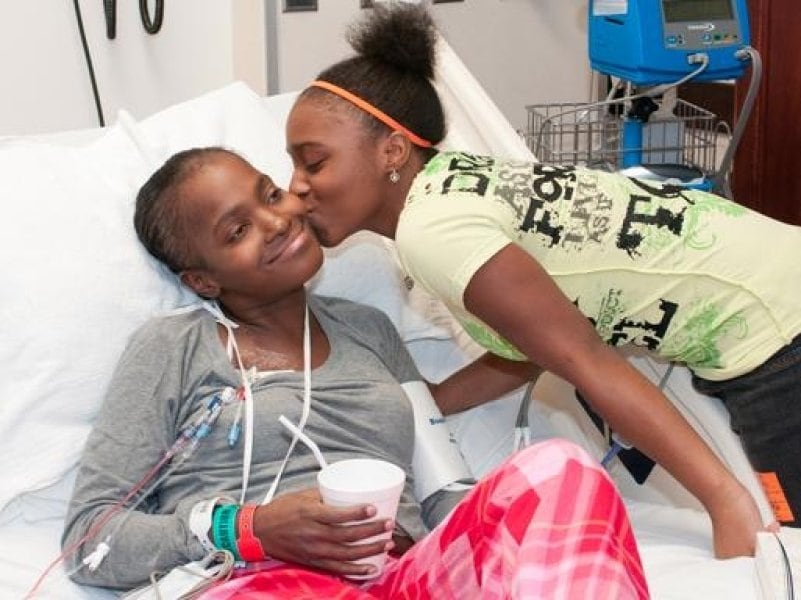Scientists have known that a stem cell transplant might cure sickle cell disease, but until now the treatment has included a grueling course of chemotherapy (drugs commonly used to cure cancer), before the stem cell transplant could be completed.
This week, Leshea Thomas, 33, became one of first patients to receive a successful stem cell transplant that cured her sickle disease without having to endure a course of chemotherapy.
A Gentler, Less Risky Treatment
One in every 500 African Americans is born with sickle cell disease (also called sickle cell anemia). The disease also affects 80,000 Americans from a variety of ethnic backgrounds.
Sickle cell is an extremely painful, inherited (it is not contagious) condition that changes the shape of red blood cells; instead of being round, they are shaped like a sickle. The misshapen cells travel throughout the body causing episodes of excruciating pain and damaging many organs including the liver, gallbladder, and spleen, and eventually shortening the lifespan.
A stem cell transplant is a complex treatment that give a sickle cell patient a chance to develop a healthy, sickle-cell-free immune system by implanting healthy, donor stem cells (in the form of bone marrow) into the bone marrow of a person who has the disease. The new, healthy cells develop into healthy bone marrow that wipes out the diseased bone marrow and, in many cases, cures the disease.
Unfortunately, for patients with sickle cell, there are many barriers to the procedure: cost, access to a transplant surgical team, and health status. In order to survive the procedure, a patient must be strong enough to go through a long, challenging process, including an initial course of chemotherapy. Having the ability to perform a stem cell transplant without chemotherapy means lowering a patient’s risk of complications and making the treatment available to a larger number of people.
In Thomas’ case, the University of Illinois (UIC) transplant team used a small dose of radiation to prepare her body for the transplant, instead of the chemotherapy. “The technique is uncommon, but it is far more tolerable for patients who live with aggressive sickle cell disease and may have underlying organ disease or other complications,” said Damiano Rondelli, MD, the UIC surgeon who performed Thomas’ transplant, in a UIC interview.
Unlike the more traditional form of stem cell transplant that uses chemotherapy to destroy the patient’s own bone marrow—thereby shutting down their immune system before the procedure and leaving them vulnerable to infections, this form of transplant leaves some of the patient’s bone marrow intact.
Thomas has been battling sickle cell disease since she was just 8 months old, but her illness became even more severe after she gave birth to her daughter. After a lifetime spent in and out of hospitals and in pain, Thomas told UIC: “I just want to be at home with my daughter every day and every night.”
With further research, this type of stem cell transplant may be available to a wide range of patients, but for now, it is only possible for patients who have a healthy sibling who is a compatible bone marrow donor. In Thomas’ case, her sister was a match.
Thomas is now (six months post transplant) cured of sickle cell disease and no longer requires blood transfusions.
About 25 adults have received a similar chemotherapy-free stem cell transplant for sickle cell disease in recent years at the National Institutes of Health in Bethesda, MD. Approximately 85 percent have been cured. To learn more about ongoing sickle cell transplant trials at NIH (a participant in a trial will not be charged for a procedure) call 1-800-411-1222 or visit the NIH clinical trials registry at www.clinicaltrials.gov and search under ‘sickle cell disease.”









